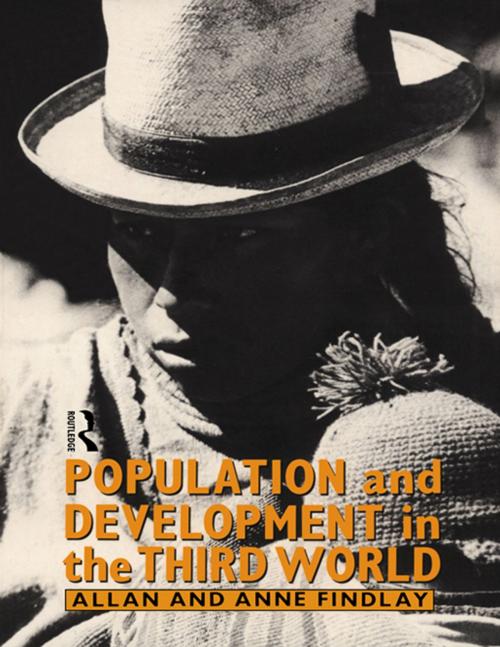Population and Development in the Third World
Nonfiction, Science & Nature, Science, Earth Sciences, Geography, Social & Cultural Studies, Social Science, Human Geography| Author: | Allan M. Findlay, Anne Findlay | ISBN: | 9781134963379 |
| Publisher: | Taylor and Francis | Publication: | January 28, 2008 |
| Imprint: | Routledge | Language: | English |
| Author: | Allan M. Findlay, Anne Findlay |
| ISBN: | 9781134963379 |
| Publisher: | Taylor and Francis |
| Publication: | January 28, 2008 |
| Imprint: | Routledge |
| Language: | English |
Allan and Anne Findlay argue that a nation's human population is a vital resource in the development process. Changes in its composition - increased life expectancy combined with a falling birth rate, for example - can have profound effects upon a society. Warfare and mass migration of male workers also have long-reaching effects on those left behind. The rapid growth of Third World populations has often incorrectly been identified as the major force preventing more rapid economic development. Population pressure has been known to generate technological breakthroughs. Their final chapter examines family planning programmes, and concludes by asking who benefits most from population policies and questioning the right of developed countries to advocate family planning programmes for Third World nations.
Allan and Anne Findlay argue that a nation's human population is a vital resource in the development process. Changes in its composition - increased life expectancy combined with a falling birth rate, for example - can have profound effects upon a society. Warfare and mass migration of male workers also have long-reaching effects on those left behind. The rapid growth of Third World populations has often incorrectly been identified as the major force preventing more rapid economic development. Population pressure has been known to generate technological breakthroughs. Their final chapter examines family planning programmes, and concludes by asking who benefits most from population policies and questioning the right of developed countries to advocate family planning programmes for Third World nations.















